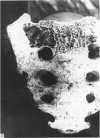Abstract
An attempt has been made to find the route and relative magnitude of weight passing through different components of the sacrum. In 44 adult male dry sacra, the combined surface area of the body and the two facets was compared with the combined surface area of the two auricular surfaces. It was found that the forces acting on the body and articular facets, at the upper end of the sacrum, are ultimately transmitted through the two auricular surfaces with an appreciable part of the load passing directly from the transverse process of the fifth lumbar vertebra to the ala of the sacrum through the lumbosacral ligament. The direction of the trabecular bone indicates the route of load transmission in the sacrum. From the various parts of the sacrum (body, facets, alae and laminae) distinct sets of trabeculae extend towards the auricular surface. Observations on the sacra with the anomalous articular processes provided strong evidence for the role of the neural arch elements in the load transmission. In specimens where the articular facet was absent on one or both sides, there was always an accessory facet on the ala of the sacrum so that the load was transmitted to this facet from the transverse process of the fifth lumbar vertebra.
Full text
PDF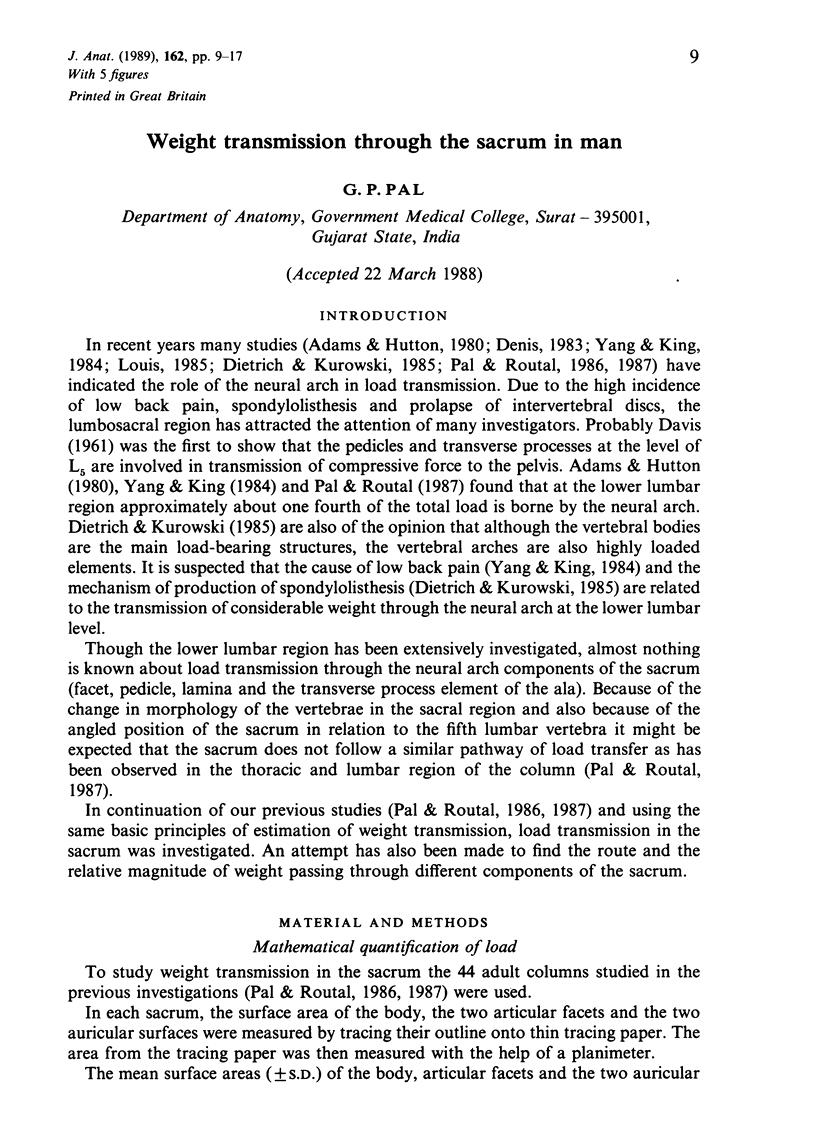
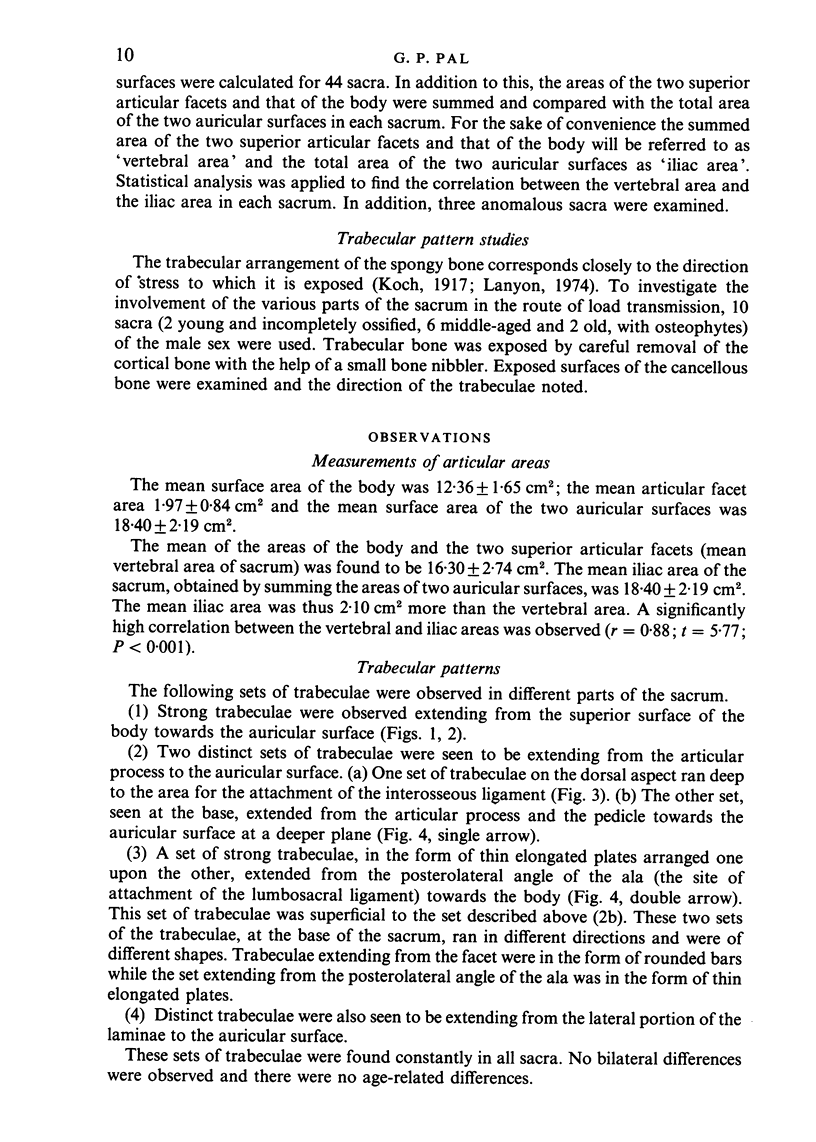
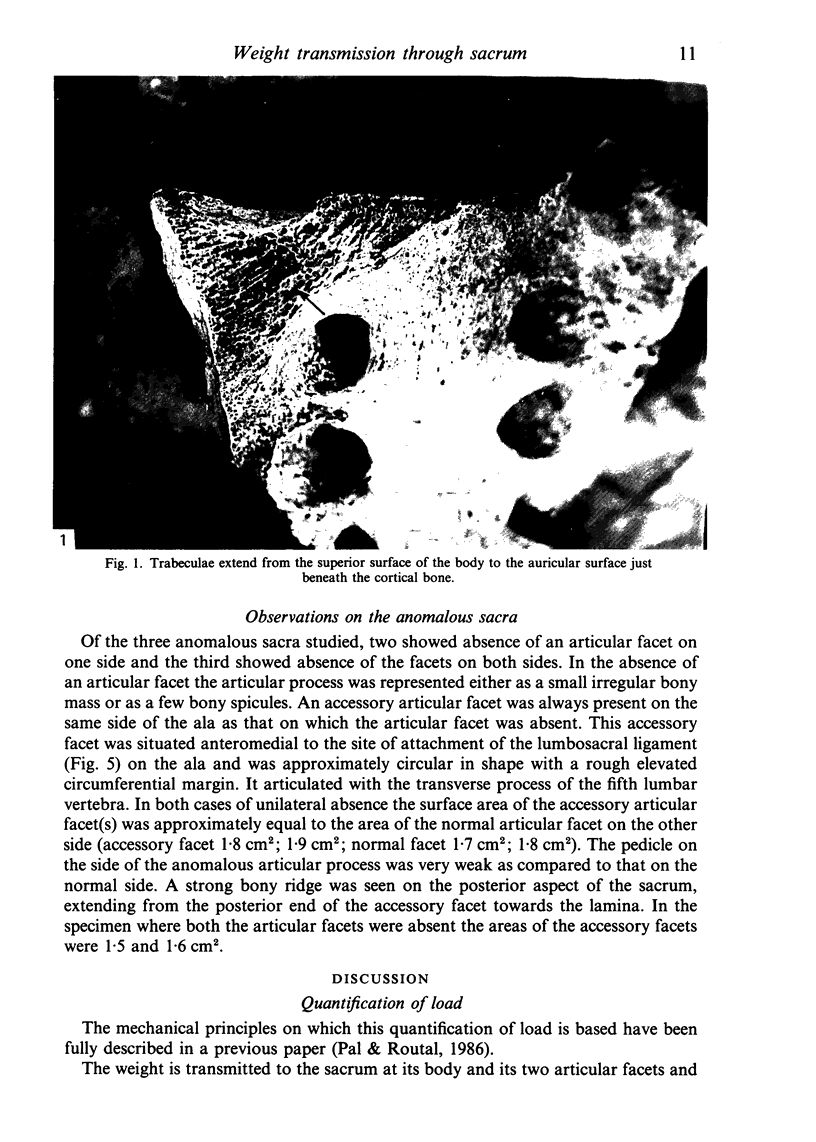
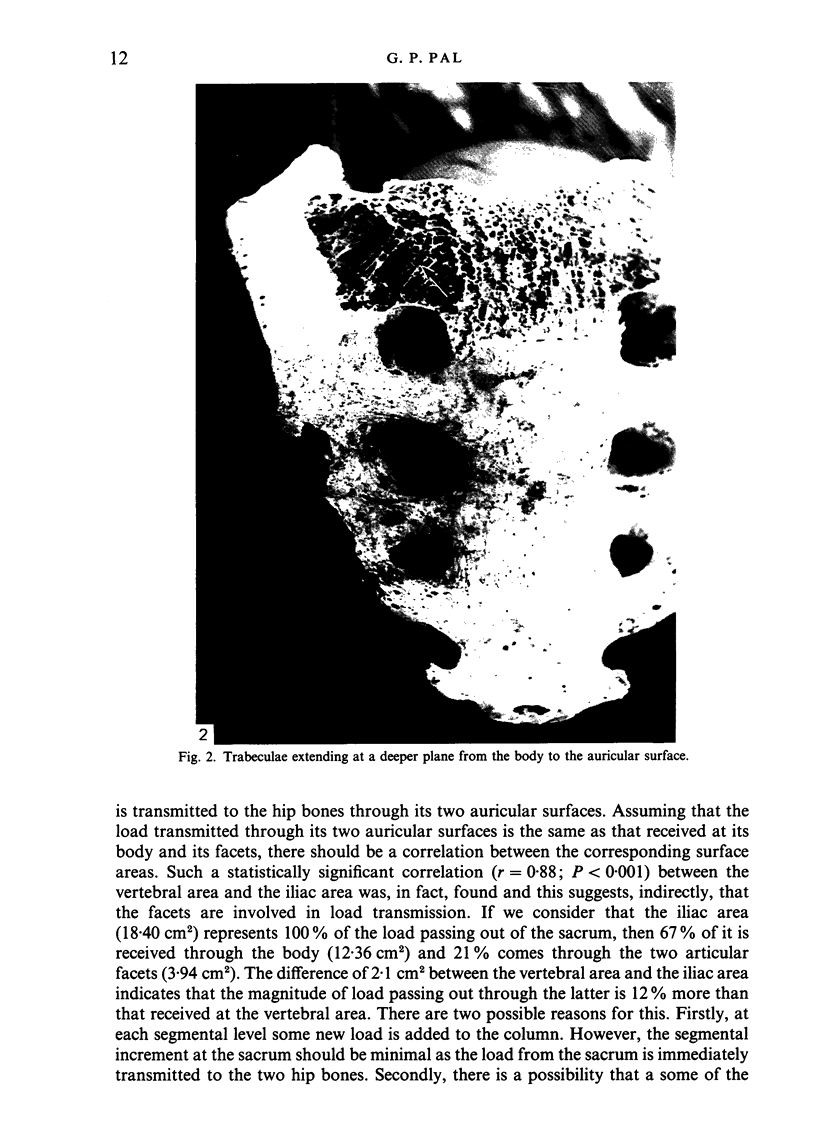
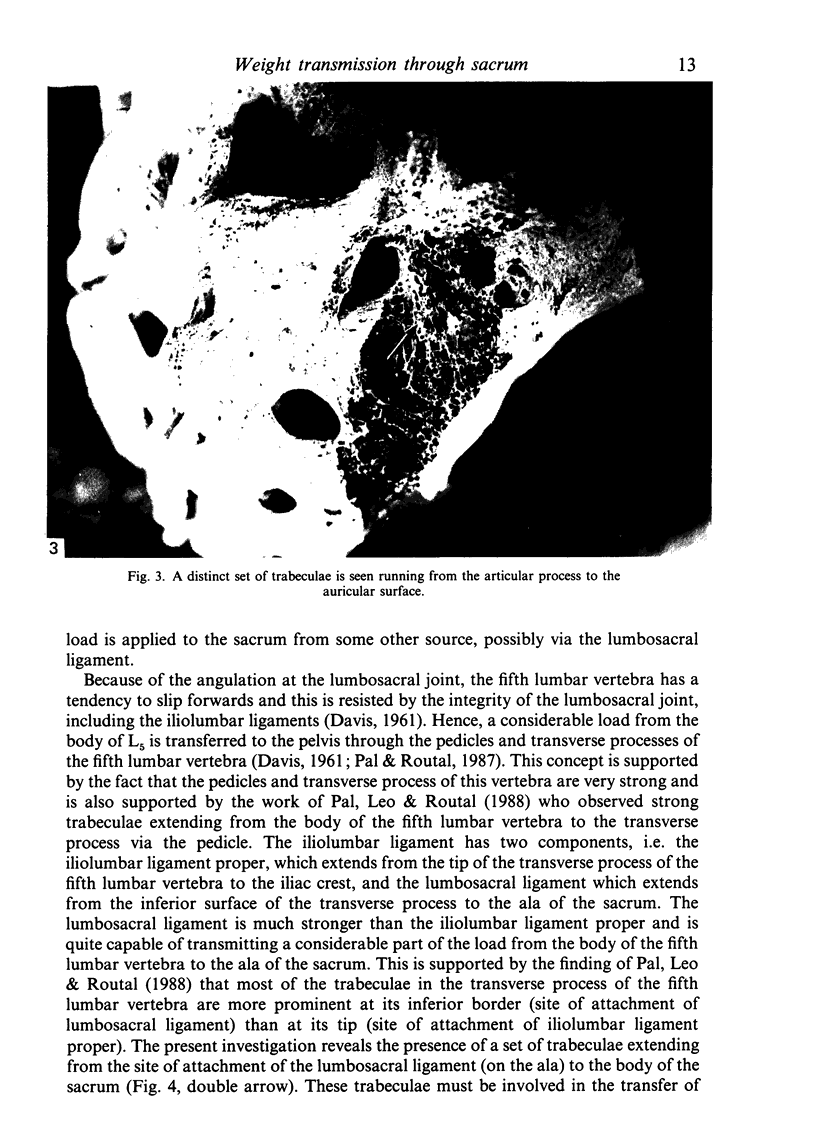
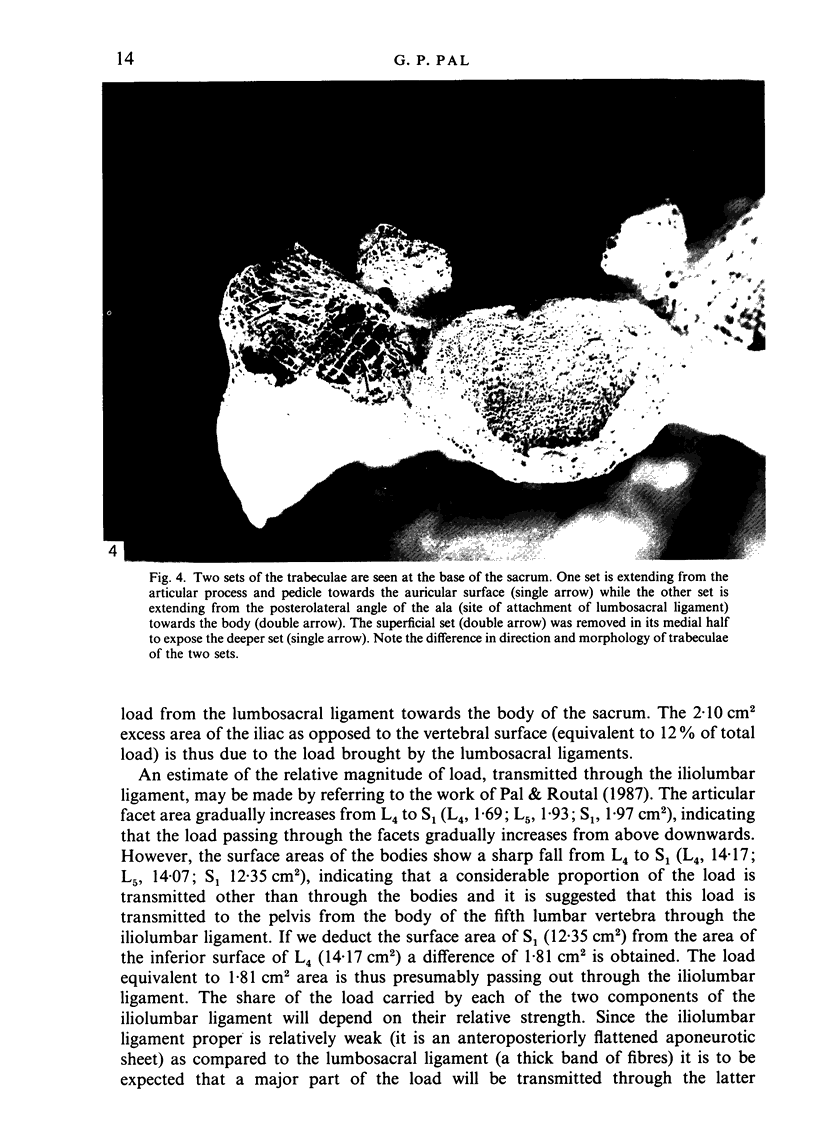
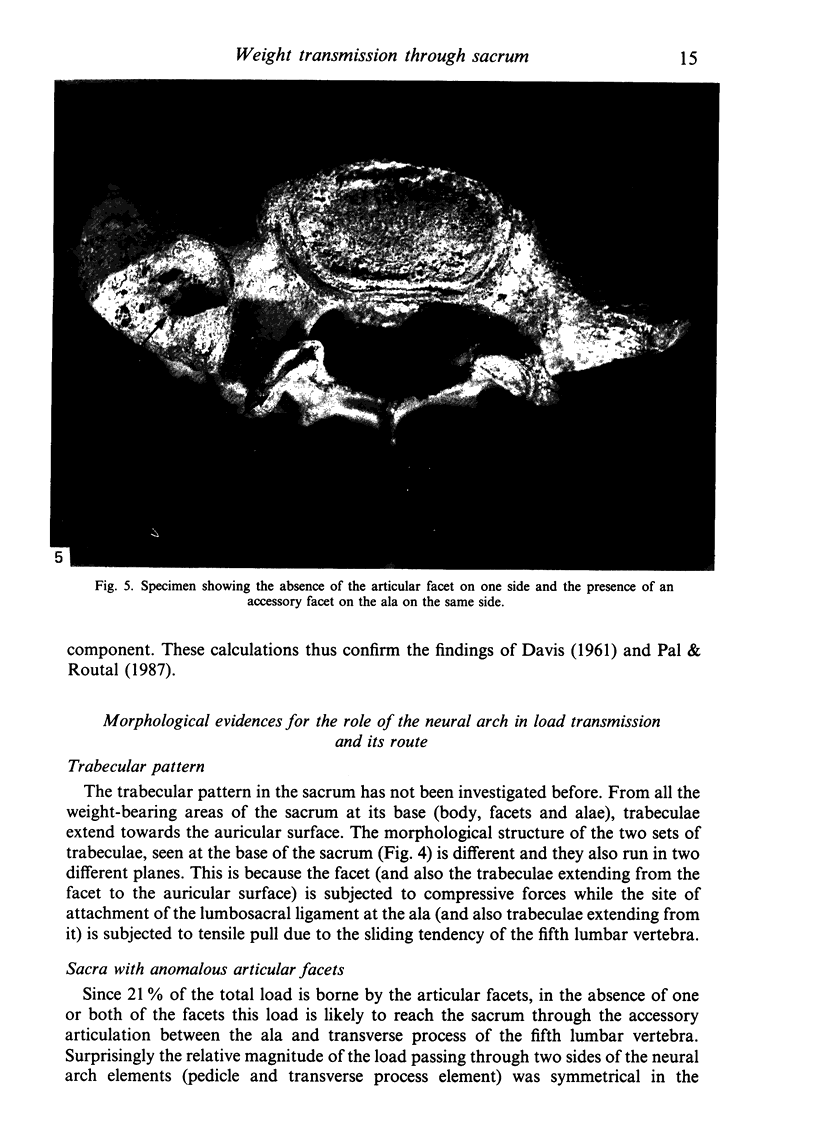
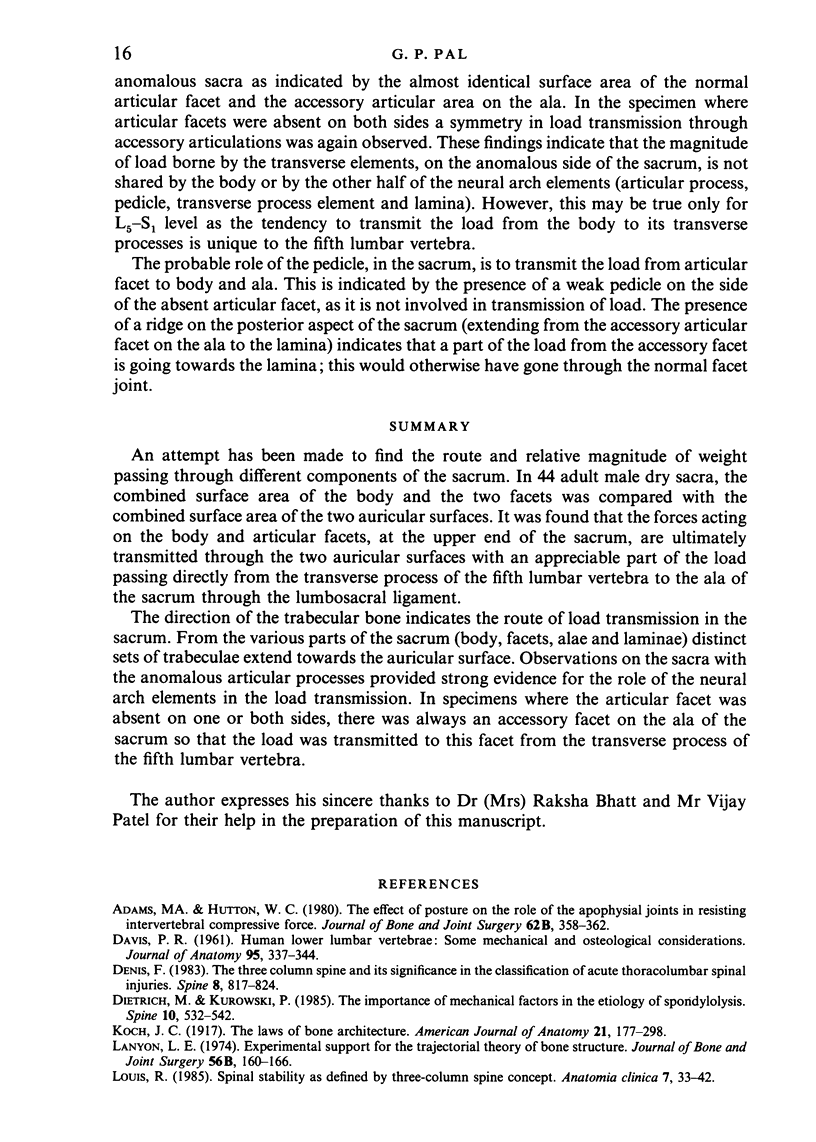
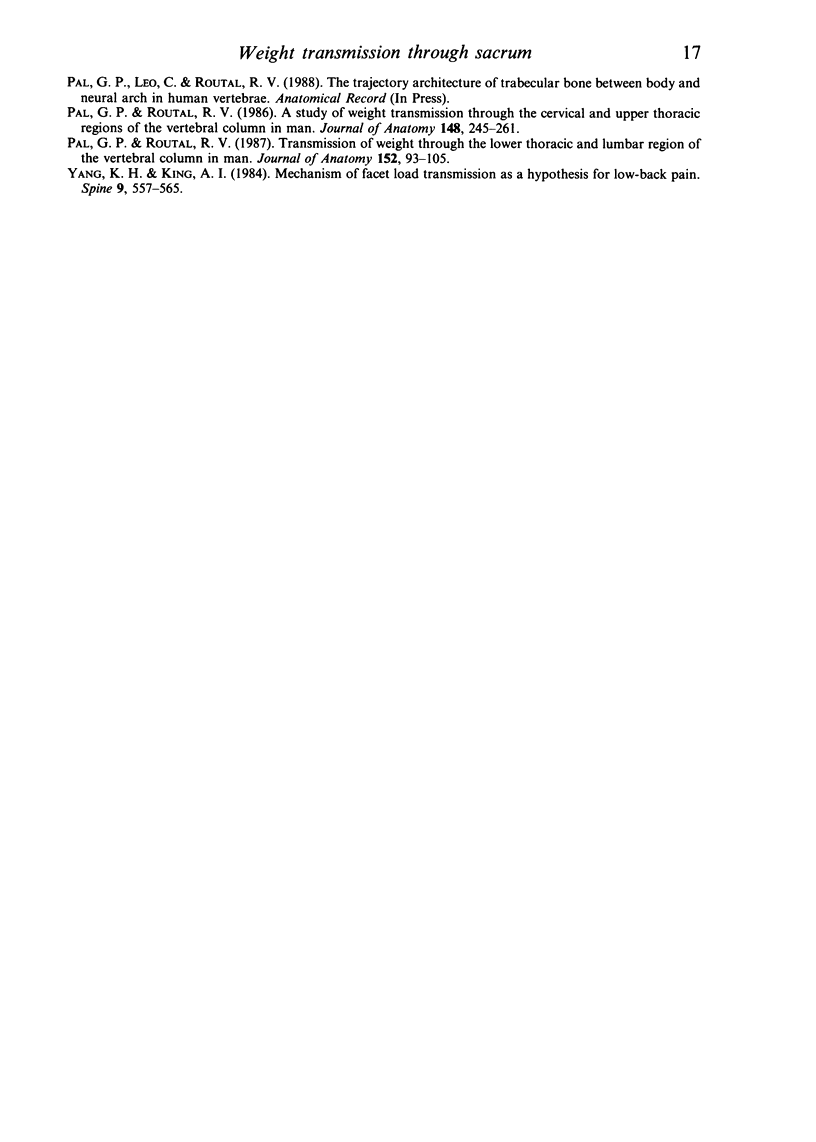
Images in this article
Selected References
These references are in PubMed. This may not be the complete list of references from this article.
- Adams M. A., Hutton W. C. The effect of posture on the role of the apophysial joints in resisting intervertebral compressive forces. J Bone Joint Surg Br. 1980 Aug;62(3):358–362. doi: 10.1302/0301-620X.62B3.6447702. [DOI] [PubMed] [Google Scholar]
- Davis P. R. Human lower lumbar vertebrae: Some mechanical and osteological considerations. J Anat. 1961 Jul;95(Pt 3):337–344. [PMC free article] [PubMed] [Google Scholar]
- Denis F. The three column spine and its significance in the classification of acute thoracolumbar spinal injuries. Spine (Phila Pa 1976) 1983 Nov-Dec;8(8):817–831. doi: 10.1097/00007632-198311000-00003. [DOI] [PubMed] [Google Scholar]
- Dietrich M., Kurowski P. The importance of mechanical factors in the etiology of spondylolysis. A model analysis of loads and stresses in human lumbar spine. Spine (Phila Pa 1976) 1985 Jul-Aug;10(6):532–542. doi: 10.1097/00007632-198507000-00007. [DOI] [PubMed] [Google Scholar]
- Lanyon L. E. Experimental support for the trajectorial theory of bone structure. J Bone Joint Surg Br. 1974 Feb;56(1):160–166. [PubMed] [Google Scholar]
- Louis R. Spinal stability as defined by the three-column spine concept. Anat Clin. 1985;7(1):33–42. doi: 10.1007/BF01654627. [DOI] [PubMed] [Google Scholar]
- Pal G. P., Routal R. V. A study of weight transmission through the cervical and upper thoracic regions of the vertebral column in man. J Anat. 1986 Oct;148:245–261. [PMC free article] [PubMed] [Google Scholar]
- Pal G. P., Routal R. V. Transmission of weight through the lower thoracic and lumbar regions of the vertebral column in man. J Anat. 1987 Jun;152:93–105. [PMC free article] [PubMed] [Google Scholar]
- Yang K. H., King A. I. Mechanism of facet load transmission as a hypothesis for low-back pain. Spine (Phila Pa 1976) 1984 Sep;9(6):557–565. doi: 10.1097/00007632-198409000-00005. [DOI] [PubMed] [Google Scholar]




